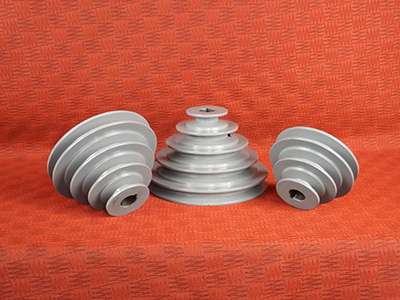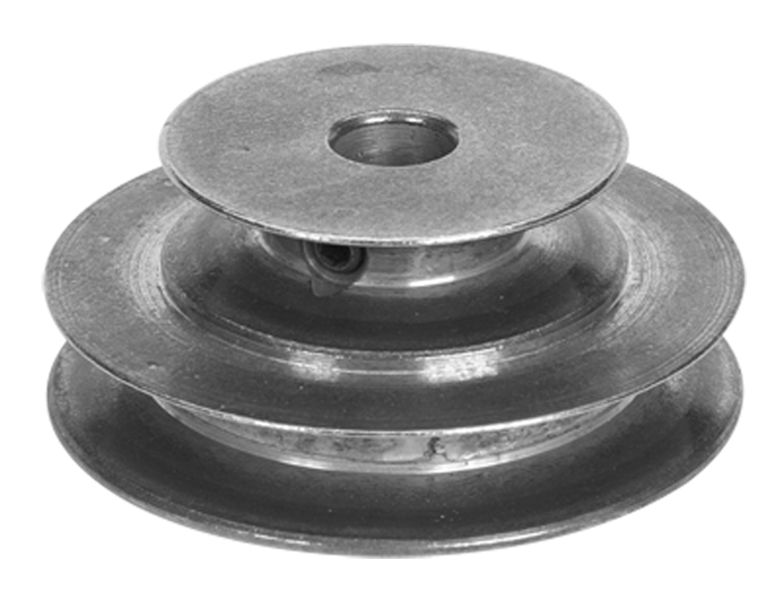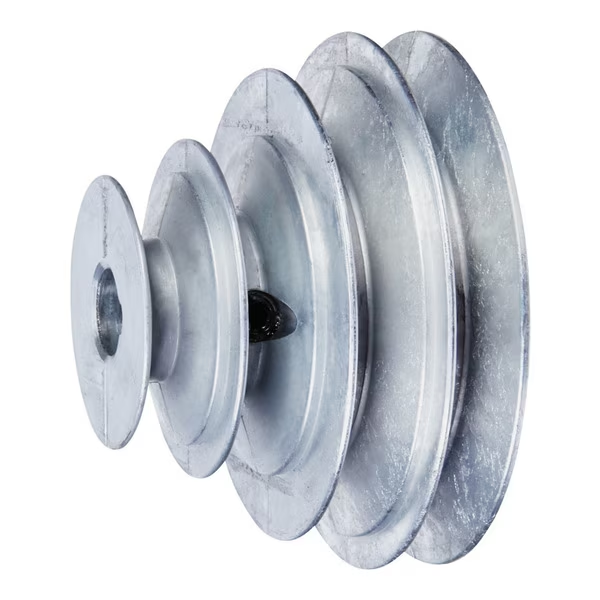Product Description
Products Type
We can custom shape,size,color material and quantity for plastic gear pulley as your requirment.
| Material | PA,PA6,PA66,PP,PE,LDPE,HDPE,UWHDPE,PTFE,POM,ABS,or Custom Compound (Any custom compound plastic is available) |
| Size | According to samples or drawings |
| Color | Black,white,red,green,transparent or any color according to Pantone colors |
| Finish | High Gloss,Fine Grain,Electroplating,Painting,Printing,Texture etc,or as request |
| Type | Round,square,rectangular,or any nonstandard shape as request |
| Logo | Debossed,embossed,printed logo or as request |
Plastic Material Properties
Company Profile
Zhongde (ZheJiang ) Machinery Equipment Co.,LTD is a company integrated in design,OEM&ODM plastic&rubber&CNCparts production.We can provide the best products and service at a competitive price.
Main Products
We can provide OEM service,which means producing base on your drawings or samples,also we can design according to its application or customer`s requirments.
Order Operation Flow
We execute each step according to the operation process flow, strictly, seriously and meet the requirements of customers with good quality on time.
For Fast Quotation,Please Inform Below Details
1. Production type
2. Material specification (or let us know the using environmental)
3. Size details? (or provide drawings or samples for refference)
4. Quantity request
5. Prefer color
|
Shipping Cost:
Estimated freight per unit. |
To be negotiated |
|---|
| Certification: | CE, ISO |
|---|---|
| Pulley Sizes: | Type F |
| Manufacturing Process: | Forging |
| Samples: |
US$ 999/Piece
1 Piece(Min.Order) | Order Sample For sample price, package information, and logisti
|
|---|
| Customization: |
Available
| Customized Request |
|---|

How do step pulleys contribute to the functionality of drill presses and lathes?
Step pulleys play a crucial role in enhancing the functionality of drill presses and lathes. Here’s how they contribute:
1. Variable Speed Control:
Step pulleys enable variable speed control in drill presses and lathes, allowing users to adjust the rotational speed of the spindle or workpiece. By changing the position of the drive belt on different steps of the pulley, operators can select different speed settings to match the requirements of various materials, cutting tools, or machining operations. This versatility in speed control enhances the precision and flexibility of these machines.
2. Wide Speed Range:
Step pulleys provide a wide range of speed options in drill presses and lathes. The pulley system typically consists of multiple steps with different diameters, each corresponding to a specific speed ratio. This allows users to choose the desired speed within the available range, accommodating a variety of cutting or drilling tasks, from high-speed operations to slow and precise operations.
3. Easy Speed Changes:
Changing the speed on a drill press or lathe equipped with step pulleys is relatively straightforward. By manually adjusting the position of the drive belt on the pulley steps or by engaging different pulley combinations (in machines with multiple pulleys), operators can quickly switch between speed settings. This ease of speed changes enables efficient workflow and facilitates adaptability to different machining requirements.
4. Cost-Effective Solution:
Step pulleys provide a cost-effective speed control mechanism for drill presses and lathes. Compared to more complex electronic speed control systems or variable frequency drives, step pulleys are relatively simple and affordable. They offer a reliable and efficient means of achieving variable speed functionality without the need for sophisticated electronic components or significant additional costs.
5. Reliable and Durable:
Step pulleys are known for their reliability and durability, making them suitable for the demanding operations of drill presses and lathes. They are designed to withstand high rotational speeds and heavy loads, ensuring consistent performance over extended periods of use. With proper maintenance and lubrication, step pulleys can provide long-lasting service in these machining applications.
6. Compatibility with Belts or Cables:
Step pulleys are compatible with various types of belts or cables, allowing for flexibility in the selection of power transmission components. Drill presses and lathes can be equipped with V-belts, flat belts, or even cables, depending on the specific requirements of the machine and the desired power transmission characteristics. This compatibility enhances the versatility and adaptability of the pulley system.
Overall, step pulleys significantly enhance the functionality of drill presses and lathes by providing variable speed control, a wide speed range, easy speed changes, cost-effective solutions, reliability, and compatibility with different power transmission components. These features empower operators to perform a broad range of machining tasks with precision and efficiency.

How do you select the right step pulley configuration for a specific task?
Selecting the right step pulley configuration for a specific task involves considering several factors to ensure optimal performance. Here’s a step-by-step guide to help you make the right choice:
1. Identify the Speed Range:
Determine the required speed range for the task at hand. Consider the materials being worked on, the cutting tools or processes involved, and any specific speed requirements for achieving the desired results. This will help you understand the range of speeds needed from the step pulley.
2. Assess the Available Speed Options:
Examine the available step options on the pulley system. Count the number of steps and note their respective diameters. Each step corresponds to a specific speed ratio, allowing you to achieve different speed settings. Evaluate whether the available speed options cover the required range for your task.
3. Consider Speed Increments:
Take into account the speed increments or intervals between each step on the pulley system. Some step pulleys offer finer speed adjustments with smaller increments, while others may have larger jumps between steps. Determine if the available increments align with the level of speed control needed for your task. Smaller increments provide more precise speed adjustments.
4. Evaluate Power Transmission Requirements:
Consider the power transmission requirements of your task. Assess the torque and power demands of the machinery or equipment involved. Ensure that the step pulley configuration you choose can handle the required power transmission without overloading or straining the system.
5. Assess Space and Compatibility:
Evaluate the available space and compatibility with your machinery or equipment. Ensure that the step pulley configuration can be properly installed and integrated into the existing system. Consider factors such as pulley size, shaft diameter, and belt compatibility.
6. Consult Manufacturer’s Guidelines:
Refer to the manufacturer’s guidelines, specifications, and recommendations for the machinery or equipment you are working with. The manufacturer may provide specific guidelines on selecting the appropriate step pulley configuration for optimal performance and compatibility.
7. Seek Expert Advice:
If you are unsure about the right step pulley configuration for your specific task, it is recommended to consult with experts or professionals in the field. They can provide valuable insights and guidance based on their experience and expertise.
By following these steps and considering the relevant factors, you can select the right step pulley configuration that aligns with the speed requirements, power transmission needs, and compatibility of your specific task.

How does the arrangement of steps on a pulley affect its performance?
The arrangement of steps on a pulley plays a significant role in determining its performance characteristics. Here’s how the arrangement of steps can affect the performance of a pulley:
1. Speed Range:
The number and spacing of steps on a pulley determine the available speed range. A pulley with more steps provides a broader range of speed options, allowing for finer speed control and greater flexibility in adjusting the speed to suit specific requirements.
2. Speed Increment:
The spacing between steps influences the speed increment between each step. A pulley with steps that are closely spaced together provides smaller speed increments, allowing for more precise speed adjustments. Conversely, steps that are spaced farther apart result in larger speed increments.
3. Torque Output:
The diameter of each step on a pulley affects the mechanical advantage and torque output. A smaller diameter step provides higher torque output at the expense of lower rotational speed. In contrast, a larger diameter step offers higher rotational speed but lower torque. The arrangement of steps allows for selecting the appropriate diameter to achieve the desired torque and speed balance.
4. Smoothness of Speed Transition:
Smoothness in speed transition is influenced by the shape and profile of the steps on the pulley. Steps with smoothly contoured profiles result in smoother belt engagement and disengagement during speed changes. This helps reduce belt wear and noise while ensuring consistent and reliable power transmission.
5. Belt Engagement:
The shape and design of the steps are crucial for effective belt engagement. Steps that have sufficient depth and an appropriate V-shaped or flat profile ensure secure and reliable belt engagement. Proper belt engagement is essential for transmitting power efficiently and preventing slippage.
6. System Efficiency:
The arrangement of steps affects the overall efficiency of the system. A well-designed step arrangement ensures that the belt or cable engages smoothly with the steps, minimizing energy losses due to slippage or excessive friction. This contributes to improved system efficiency and reduced power wastage.
7. Load Capacity:
The arrangement of steps also influences the load capacity of the pulley. Steps that are properly spaced and have adequate surface area can accommodate higher loads without compromising performance or risking belt failure.
When designing or selecting a pulley, careful consideration should be given to the arrangement of steps to optimize the performance characteristics required for the specific application.


editor by CX
2023-09-29
